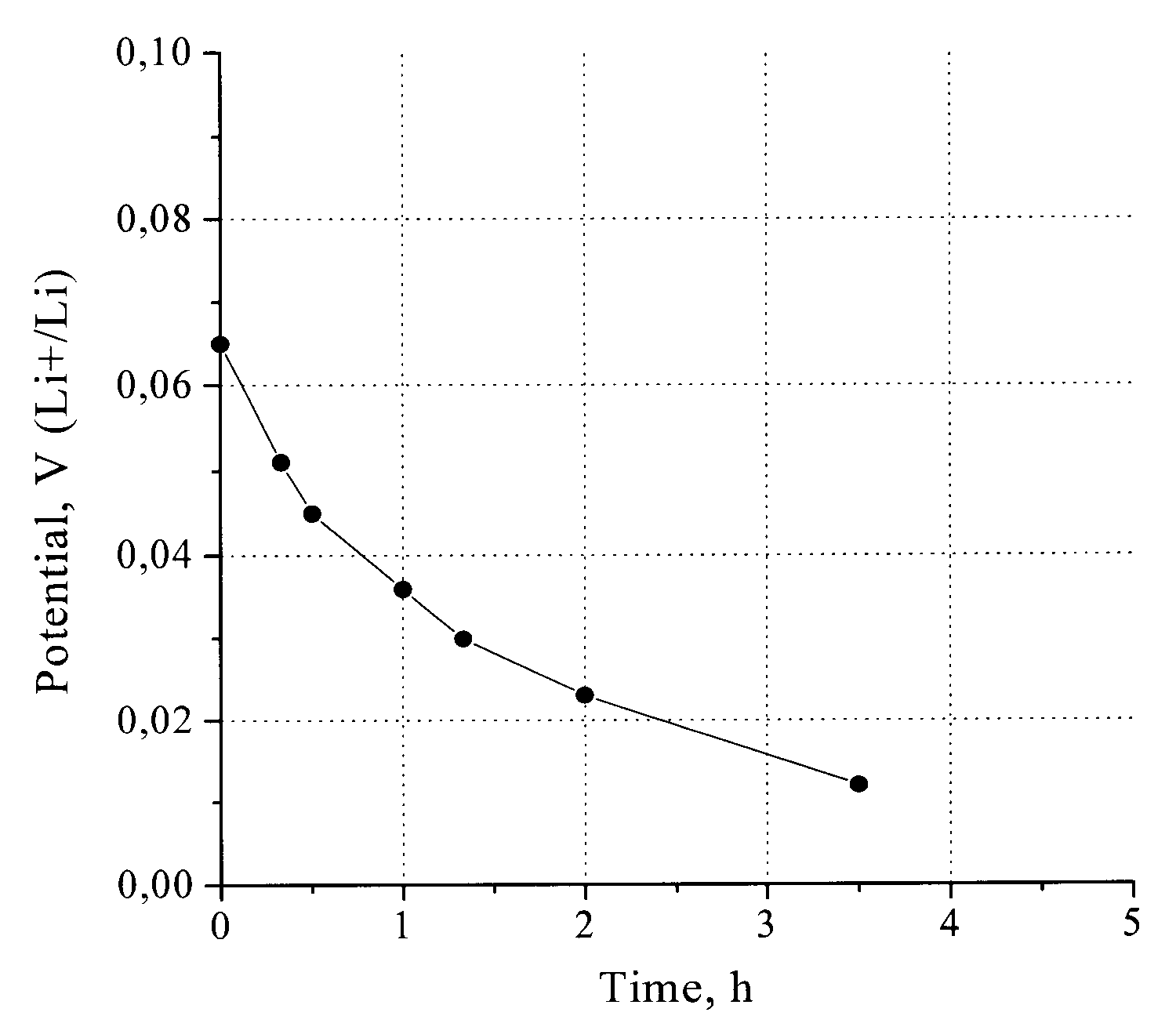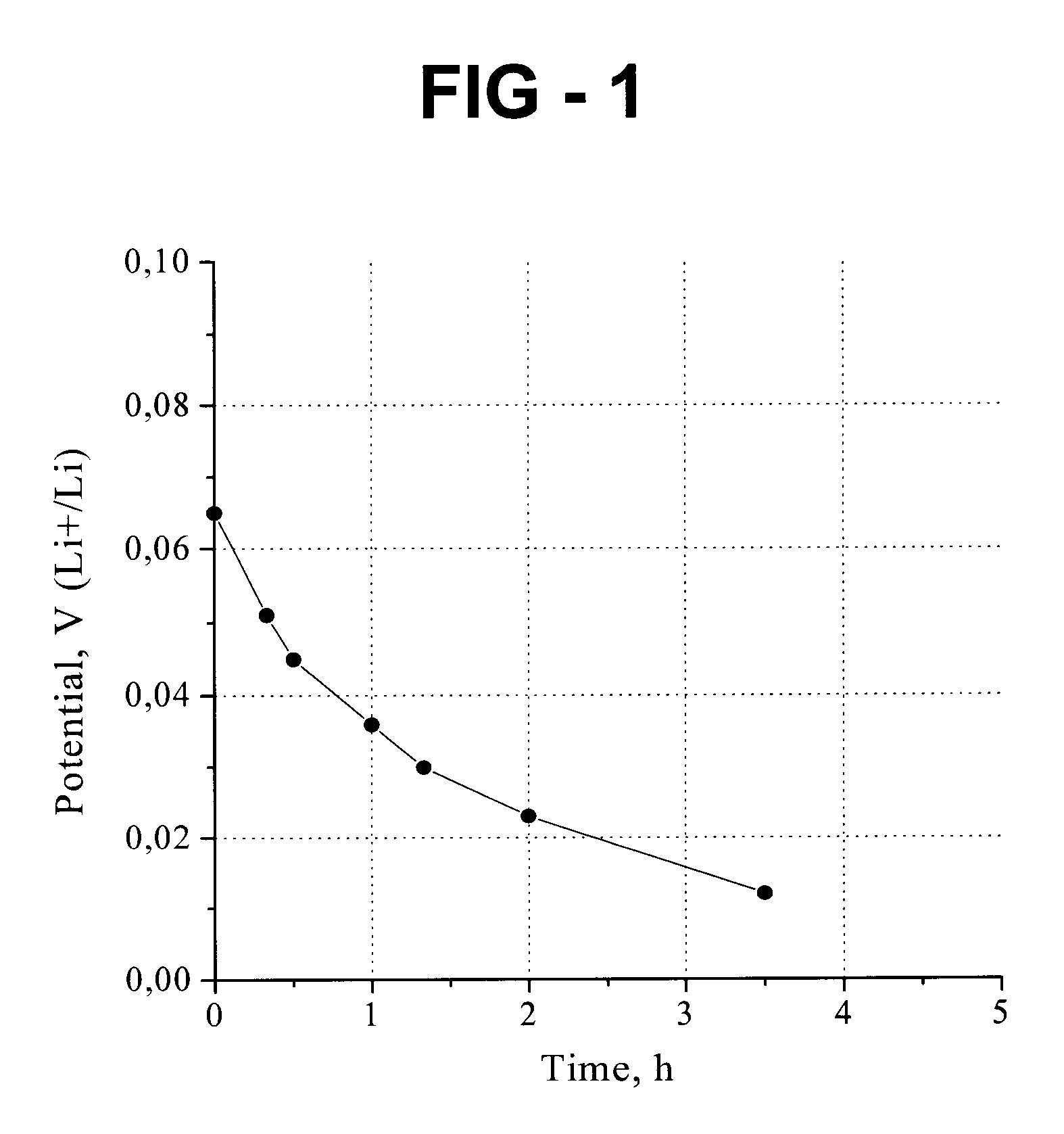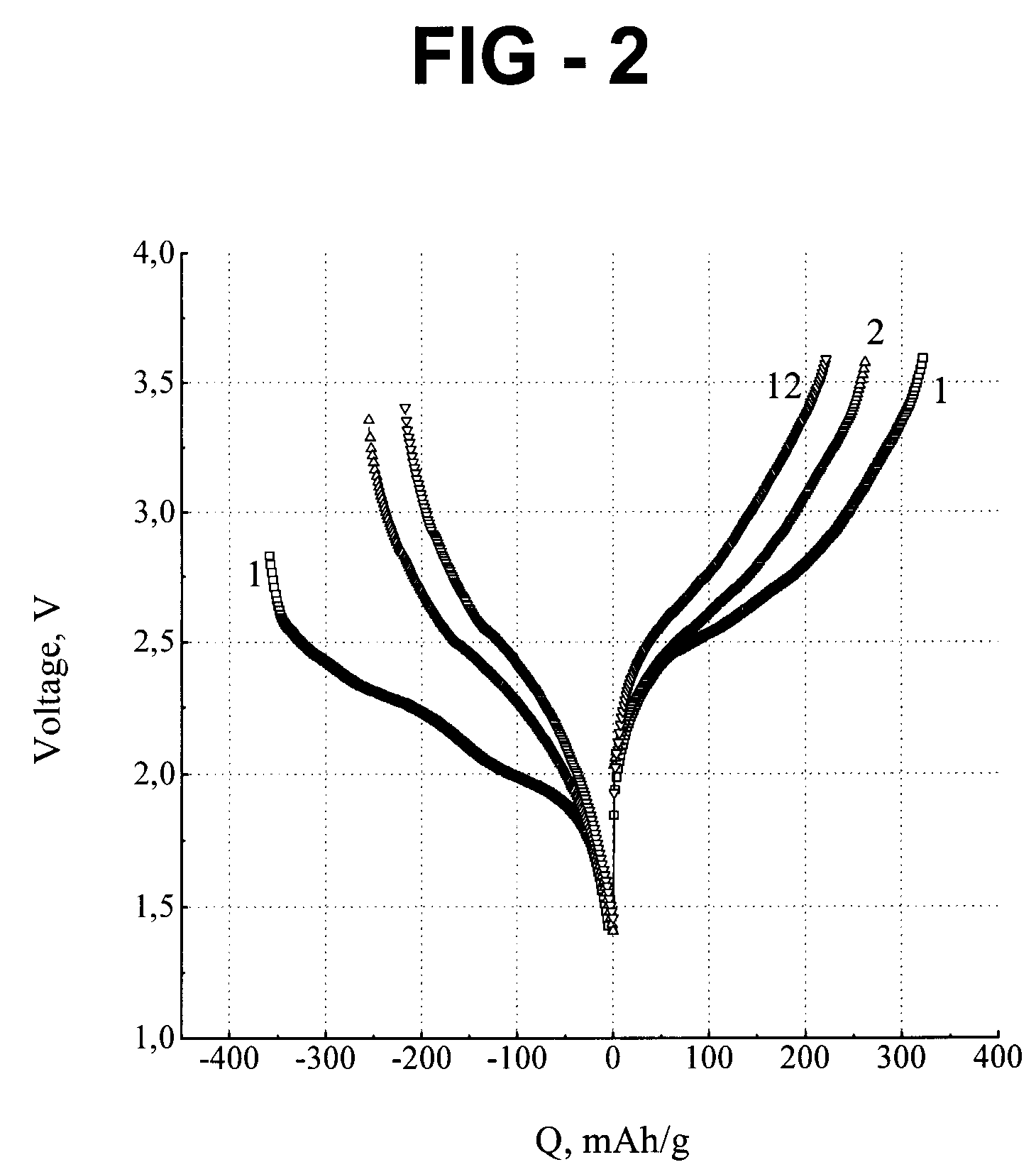Lithium-ion secondary battery cell, electrode for the battery cell, and method of making the same
a secondary battery cell and lithium-ion battery technology, applied in the field of electrodes, can solve the problems of increasing the manufacturing cost of the cell, and only compensating irreversible li, and achieves high gravimetric and volumetric energy density, high cycle life and high energy density.
- Summary
- Abstract
- Description
- Claims
- Application Information
AI Technical Summary
Benefits of technology
Problems solved by technology
Method used
Image
Examples
examples
[0038]Three examples of inventive electrodes, more specifically, negative electrodes, were prepared. To prepare all of the examples, a small piece of lithium metal with thickness of ˜100μ, and surface area of ˜0.2 cm2 was rolled onto a current collector made from a nickel foil. This assembly was pressed onto a leaf of a carbon paper. The carbon paper has a thickness of 200μ, a square shape of 2 cm2, and a mass of 0.016 g.
[0039]For Example 1, the assembly is pressed onto the leaf with a pressure ranging from 2 to 3 MPa. The negative electrode was then stored / kept in a dry box for a period of time and was observed for color transition. Initial color of the carbon paper is black, which changed to violet-blue in color, and then to light blue in color. The color transition indicates a process of carbon lithiation. A golden-yellow color indicates complete / full lithiation. For Example 1, complete lithiation occurred after approximately 40 hours.
[0040]The negative electrode of Example 1 was...
PUM
 Login to View More
Login to View More Abstract
Description
Claims
Application Information
 Login to View More
Login to View More - R&D
- Intellectual Property
- Life Sciences
- Materials
- Tech Scout
- Unparalleled Data Quality
- Higher Quality Content
- 60% Fewer Hallucinations
Browse by: Latest US Patents, China's latest patents, Technical Efficacy Thesaurus, Application Domain, Technology Topic, Popular Technical Reports.
© 2025 PatSnap. All rights reserved.Legal|Privacy policy|Modern Slavery Act Transparency Statement|Sitemap|About US| Contact US: help@patsnap.com



